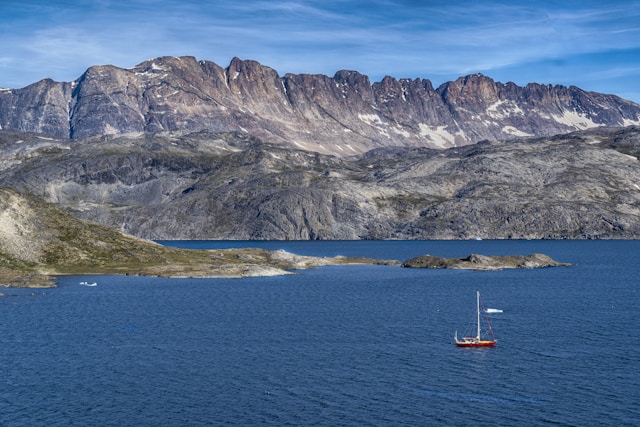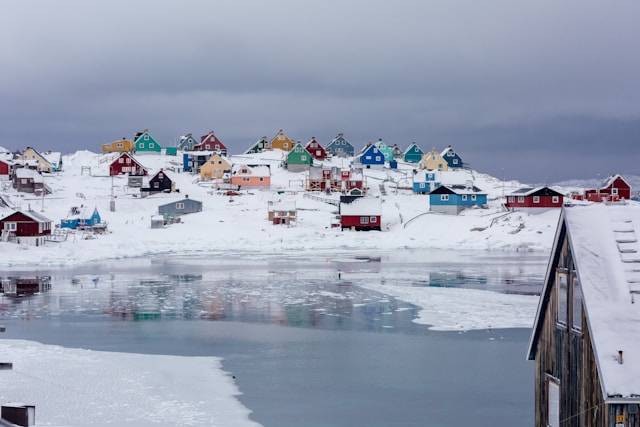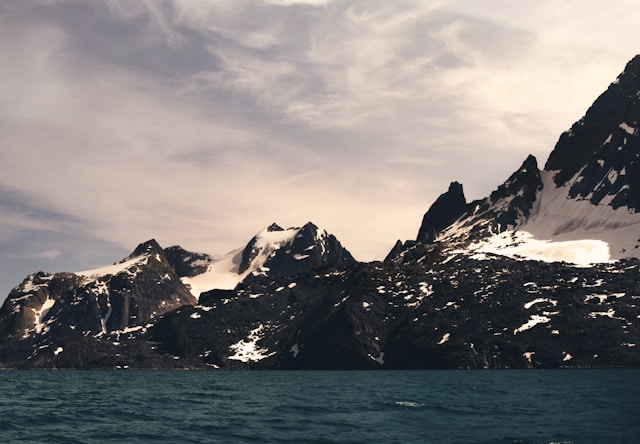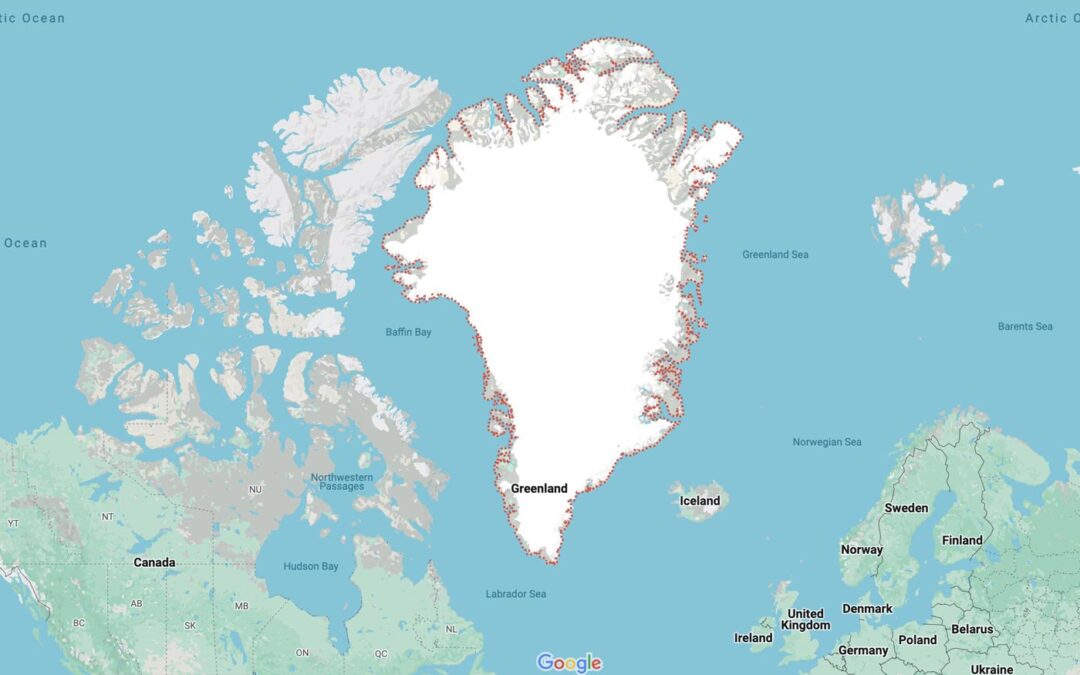The world’s largest island is Greenland. It holds a unique position in the world due to its size, geographical location, and cultural significance. Here are detailed insights into Greenland:
Physical Characteristics of the Largest Island in the World:
- Area: Greenland covers an area of approximately 2.16 million square kilometers (836,300 square miles), making it the largest island in the world that is not considered a continent.
- Geography: About 80% of Greenland is covered by the Greenland Ice Sheet, the second largest ice body in the world after Antarctica.
- Landscape: The island features a rugged coastline with numerous fjords and a mountainous interior. It is characterized by vast ice expanses, glaciers, and arctic tundra.

Cliffs in Greenland, the world’s largest island
Location:
- Geography: Greenland is located in the North Atlantic Ocean, east of the Canadian Arctic Archipelago. It is part of the Kingdom of Denmark.
- Coordinates: Roughly between 60° and 83° North latitude and 20° to 75° West longitude.
Climate:
- Arctic Climate: Greenland’s climate is predominantly arctic, with long, cold winters and short, cool summers. Coastal areas can be milder due to the influence of the surrounding seas.
- Climate Change Impact: The island is significantly affected by climate change, with rising temperatures contributing to ice melt and impacting local ecosystems.

Greenland’s winter climate
Population and Culture:
- Population: Greenland has a small population of about 56,000 people. Most residents are Inuit or of mixed Inuit and Danish descent.
- Capital: Nuuk is Greenland’s capital and largest city, serving as the cultural and economic hub.
- Culture: Greenlandic culture is deeply rooted in Inuit traditions, and this is evident in its art, music, storytelling, and customs.
- Language: Greenlandic (Kalaallisut) and Danish are the official languages.
Economy:
- Primary Industries: Fishing and hunting are the mainstays of the Greenlandic economy. The island also has potential mineral resources and is exploring sustainable tourism opportunities.
- Autonomy: Greenland attained self-rule in 2009, giving it control over its natural resources and greater autonomy from Denmark.
Environment and Wildlife:
- Biodiversity: Despite the harsh climate, Greenland is home to unique Arctic wildlife, including polar bears, seals, whales, and various bird species.
- Conservation: Efforts are in place to balance resource development with environmental protection to preserve the delicate Arctic ecosystem.

Greenland’s amazing scenery makes it a natural tourist destination
Significance:
- Geopolitical: Greenland’s location and potential resources make it strategically important, especially as ice melt increases accessibility for shipping and resource exploration.
- Scientific Research: The Greenland Ice Sheet is crucial for climate research as it provides valuable data on environmental changes and global warming.
Fun Facts:
- Independence Aspirations: While part of the Kingdom of Denmark, some Greenlanders are hope to move towards full independence.
- Northern Lights: Greenland is one of the best places to experience the Northern Lights (Aurora Borealis) due to its geographic location.
Tourism:
- Attractions: Popular tourist activities include ice fjord tours, hiking, whale watching, and cultural experiences with local Inuit communities.
- Unique Destinations: Key attractions include Ilulissat Icefjord, a UNESCO World Heritage site, and Nuuk’s colorful houses and cultural sites.
Greenland, as the world’s largest island, offers a unique blend of natural beauty, cultural richness, and strategic importance. Its vast ice landscapes and traditional Inuit culture make it a fascinating destination and a critical area for understanding environmental changes.
What About Australia Being The Largest Island?
Australia is classified as a continent rather than an island. While both are landmasses surrounded by water, the key distinction lies in geological and cultural contextual definitions.
Why Australia is a Continent:
- Geological Definition: Australia sits on its own tectonic plate and is a part of the continental crust, which differentiates it from an island.
- Cultural and Historical Context: Continents are generally recognized for their distinct cultural and historical identities. Australia’s unique ecosystems and indigenous cultures contribute to its classification as a continent.
- Size and Ecosystem Diversity: While it is the smallest continent, Australia encompasses many ecosystems and climates, from deserts to rainforests, supporting diverse flora and fauna distinct to continent classification.
Greenland as the Largest Island:
- Classification: Greenland is classified as the world’s largest island because, despite its vast size, it is not a continent.
- Comparison with Australia: While Australia is significantly larger, the key distinction remains its status as a continent, placing Greenland at the top of the list for islands.
Therefore, while both Australia and Greenland are large landmasses surrounded by water, their classifications are distinct, with Greenland rightfully holding the title of the world’s largest island.

